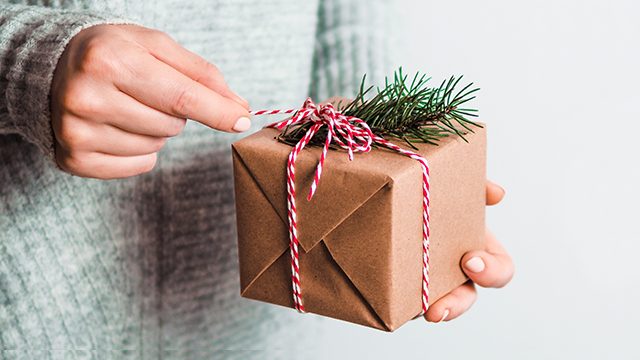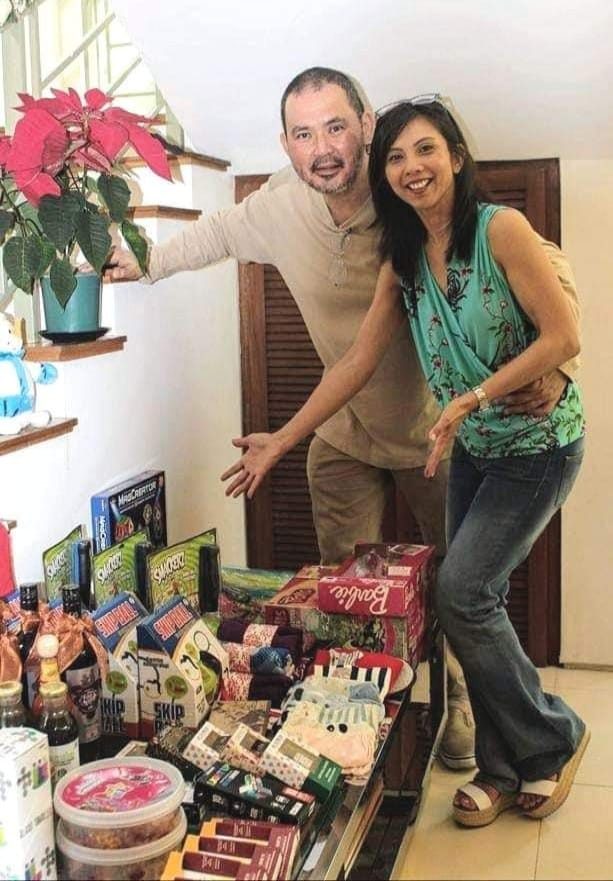SUMMARY
This is AI generated summarization, which may have errors. For context, always refer to the full article.

MANILA, Philippines – Are you planning to host a waste-free Christmas party this year but don’t know where to start? It’s hard, but not impossible.
Meah Ang See, a zero-waste practitioner and an admin of the Buhay Zero Waste Facebook group, shared some ideas on how to enjoy Christmas parties while making sure we don’t add to the world’s waste anymore. (READ: How an online community encourages Filipinos to try ‘buhay zero-waste’)
From food to gift-giving to decors, here are a zero-waste practitioner’s practical suggestions to celebrate the most wonderful time of the year without causing too much harm to the environment.
Food
If you really want to lessen food waste from Christmas parties, potluck is the way to go.
“The best option is to bring your own and potluck. Because if you do potluck, it means everybody has their own container,” See said, adding that the container can also be used for leftovers.
See acknowledged that it may be more convenient for some to just buy from establishments, especially for those with hectic schedules. “Chances are they will buy,” she added, saying that people usually just purchase group bundles-to-go from fast-food chains.
While it’s a reasonable excuse, it shouldn’t be a reason to stop trying to practice zero waste. What she suggests, instead, is to bring reusable containers to the food establishments for take-out.
“Majority of our fast-food places, they allow [the use of reusable containers]. KFC, Jollibee, McDo usually they don’t have rules against this. If you insist, they will,” she said, speaking from experience. “It’s just a matter of looking for the right restaurant, and planning it in advance.”
Of course, for a complete zero waste practice, guests must also bring their own mess kits. But even See agreed that this is not realistic since many might find it a hassle. Some might even have to buy reusable food ware, which would completely defeat the purpose of going zero waste. (READ: How going zero waste is addressing PH’s plastic pollution)
“If they really don’t want to bring their own reusable containers and mess kits, there’s a service called catering equipment rental. You can rent chafing dishes and such,” she shared.
These are services that offer all kinds of kitchenware for rent. See said plates go for P4 to P6 per piece, cutlery for P2, and even table napkins for P5 to P6 per piece. “It’s a better alternative than disposable. It’s lower in the carbon footprint chain,” she said.
As much as possible, See encourages people patronize small businesses. “If you can buy from a home-cooked or small businesses, it’s better. If you’re going to spend money on it anyway, better spend it on small business owners rather than a multinational chain,” she said, adding that these corporations definitely produce more waste and higher carbon footprint that damages the environment.
Gifts and decors
Christmas is known as the season of giving. But for zero-waste practitioners, there should also be a conscious effort to not make it a season of giving trash.
See suggested “re-gifting” for the exchange gifts, or giving something unused or preloved, provided that they are in excellent condition. This way, unnecessary purchases can be avoided.
“You get something unused from your [stash] of things you got through the years but never used. Kasi imposibleng wala (Because it’s impossible that there’s nothing),” she added.
It goes without saying that the presents should not come in unnecessary wrapping paper. See suggests the use of old newspaper, magazines, or used paper bags as alternatives, but says there could be other more creative ways to replace the traditional gift wrappers.
See said old glossy magazines and brochures could also be used for decorations, but there are other options, too.
“If you’re going to use non-biodegradable stuff and you don’t want to make it so kitschy with magazines, you want it pretty, then buy something extremely durable that you can reconfigure and reuse in the next 5 years,” See said, explaining that the ultimate goal is to “not buy and throw.”
Totally zero waste ideas
Boojie Gonzales-Manuel, another member of the Buhay Zero Waste group, suggested another idea for gift-giving this Christmas season that lessens the trash accumulated from wrapping papers. Gonzales-Manuel calls it the “gift table.”

The gift table is basically a table where all the presents for everybody are laid – except that they are not wrapped and there are no assigned labels or cards. It allows the receivers to take turns from picking from the available gifts on the table.
“Everyone was happy, saved us guessing what to get whom, and to top it all we had no wrapping waste,” Gonzales-Manuel said.
For those who want to give a truly zero waste present, however, See said it should completely do away with purchasing items.
“Instead of objects, offer services and time. I give vouchers that they can claim from me,” See said. These coupons could be exchanged for half-day babysitting or grocery shopping, depending on the recipient’s needs. “They can do that as exchange gifts.”
Another idea for a zero waste present could be donating for a foundation or a cause that’s close to the heart of the recipient. See said that if ever you choose this option, do enough background check first and make sure that the donations go to the actual cause instead of advertising or any other type of PR.
Is it really doable?
Achieving a totally zero waste Christmas party is a challenge, and See herself had a not-so-good experience when she tried hosting a zero-waste party before in the non-governmental organization she runs in Manila.
“There were people who followed the rules, but there were also some who didn’t. Last year, when I introduced the re-gifting idea it became a bit lame because only a few of us got excited about it,” she shared.
But See said it’s not impossible, as long as people are willing. (READ: The challenges of going zero waste in the Philippines)
“Sa Buhay Zero Waste kasi (In the Buhay Zero Waste community), it’s still about how far and how willing people are because you don’t want to be so antagonistic about it,” she said.

There had been past instances in the community when instead of encouraging people to go zero waste, some were intimidated by extreme practitioners. See said this is what they want to avoid because it will give other people the wrong idea about the practice.
“We’re not against buying. We’re against you buying trash. That’s the paradigm shift that you want people to realize: Don’t buy trash.” – Rappler.com
Rappler is building a network of climate advocates, LGUs, corporations, NGOs, youth groups, and individuals for the #ManyWaysToZeroWaste campaign, a movement pushing for responsible ways to use and reduce plastic. Go here to know how you can help.
Add a comment
How does this make you feel?
There are no comments yet. Add your comment to start the conversation.